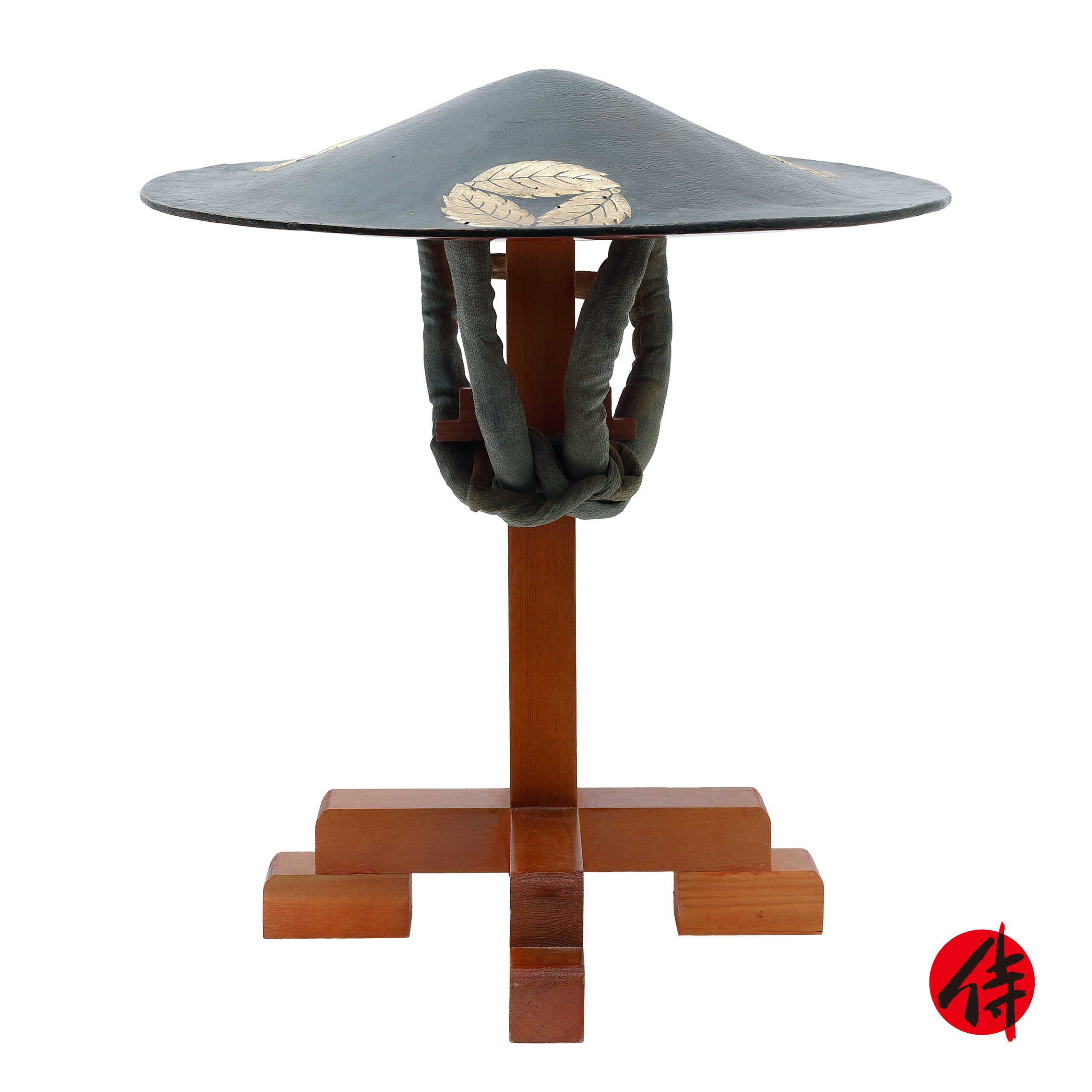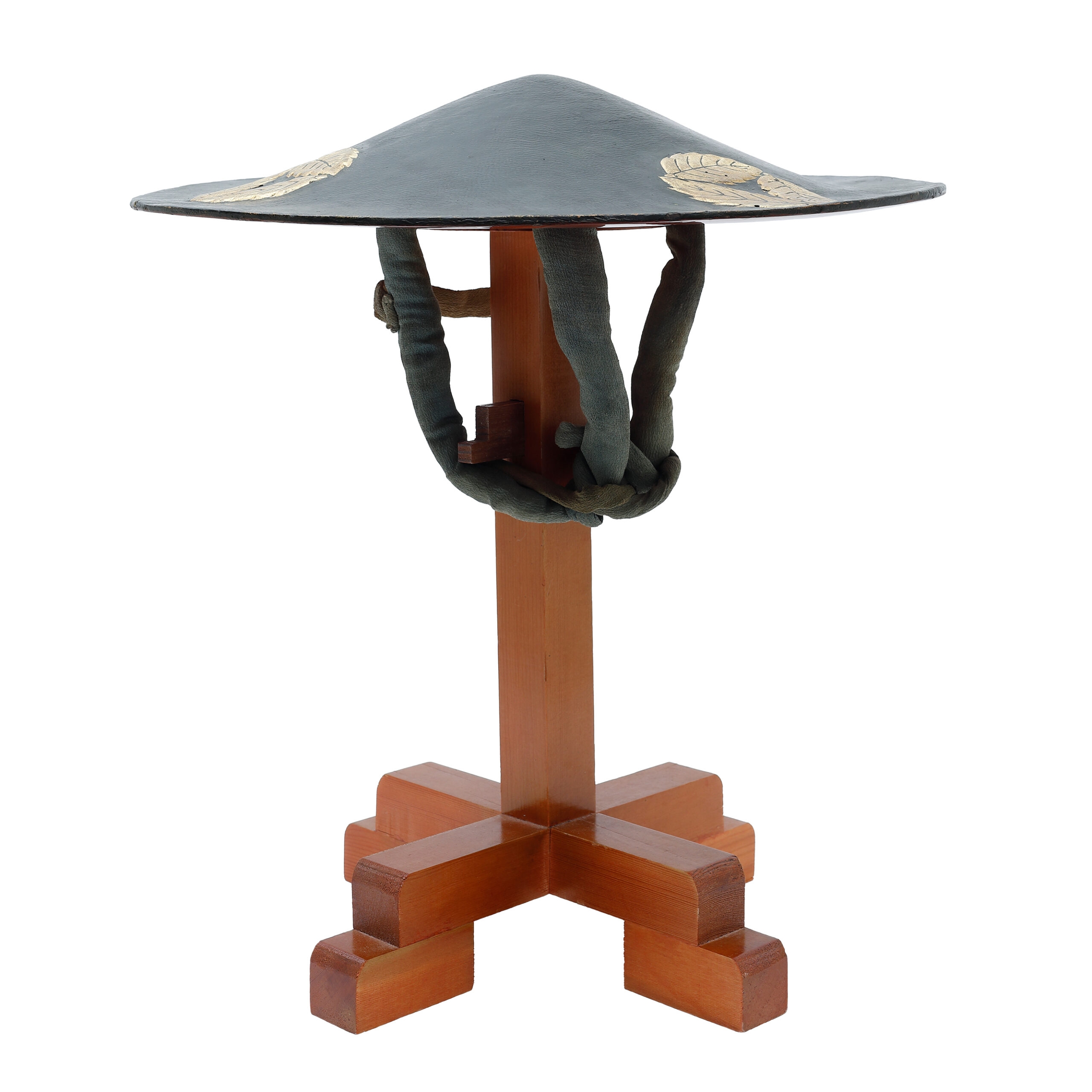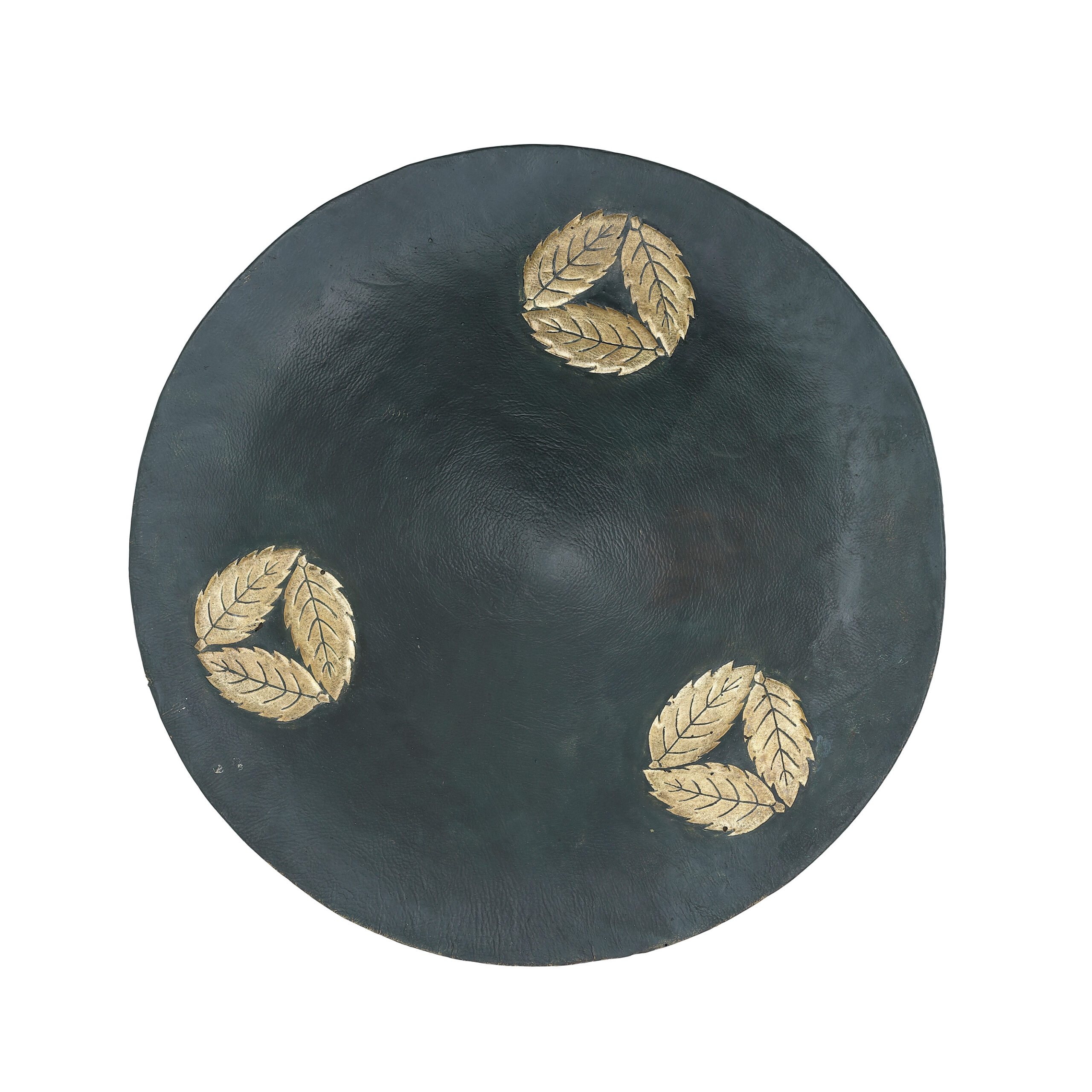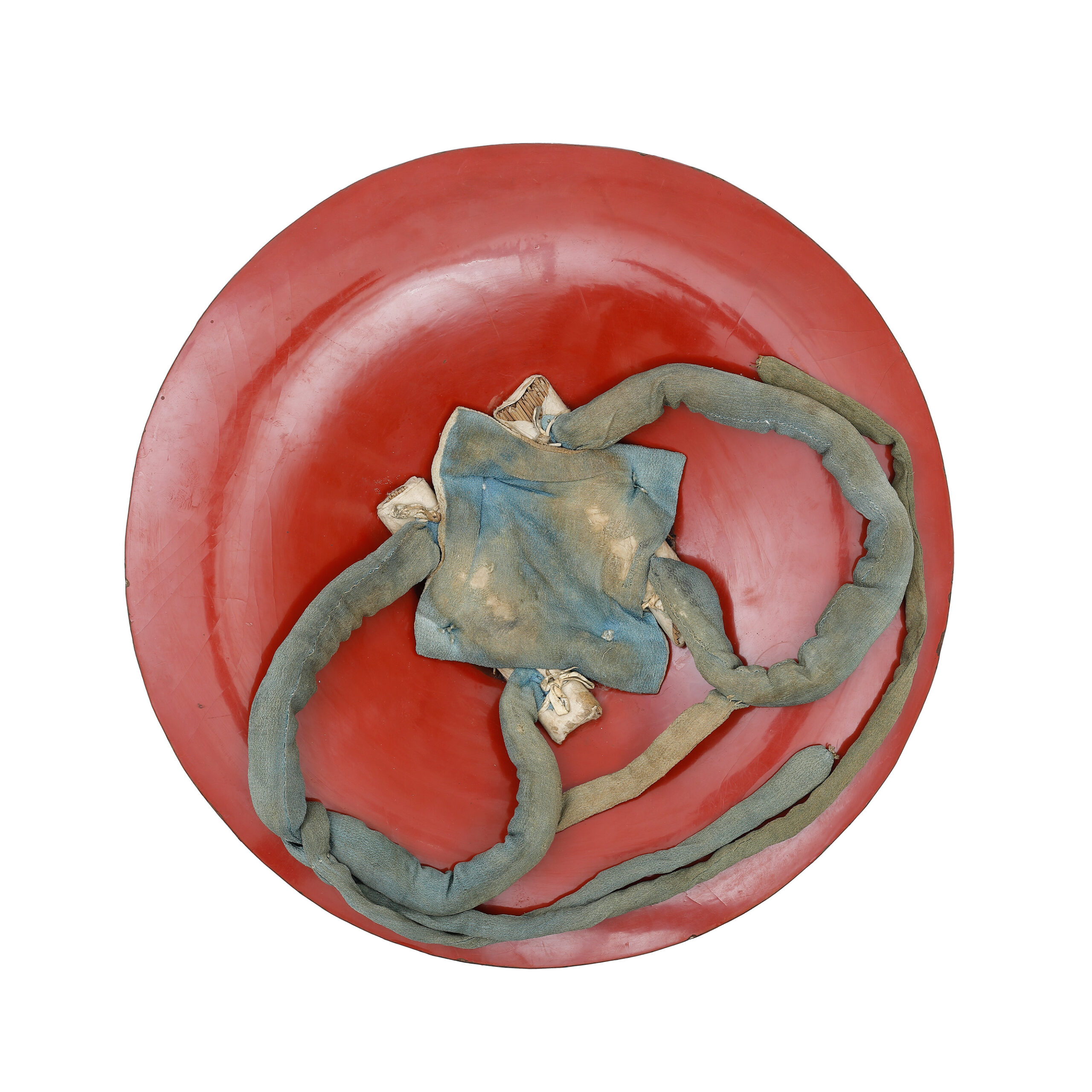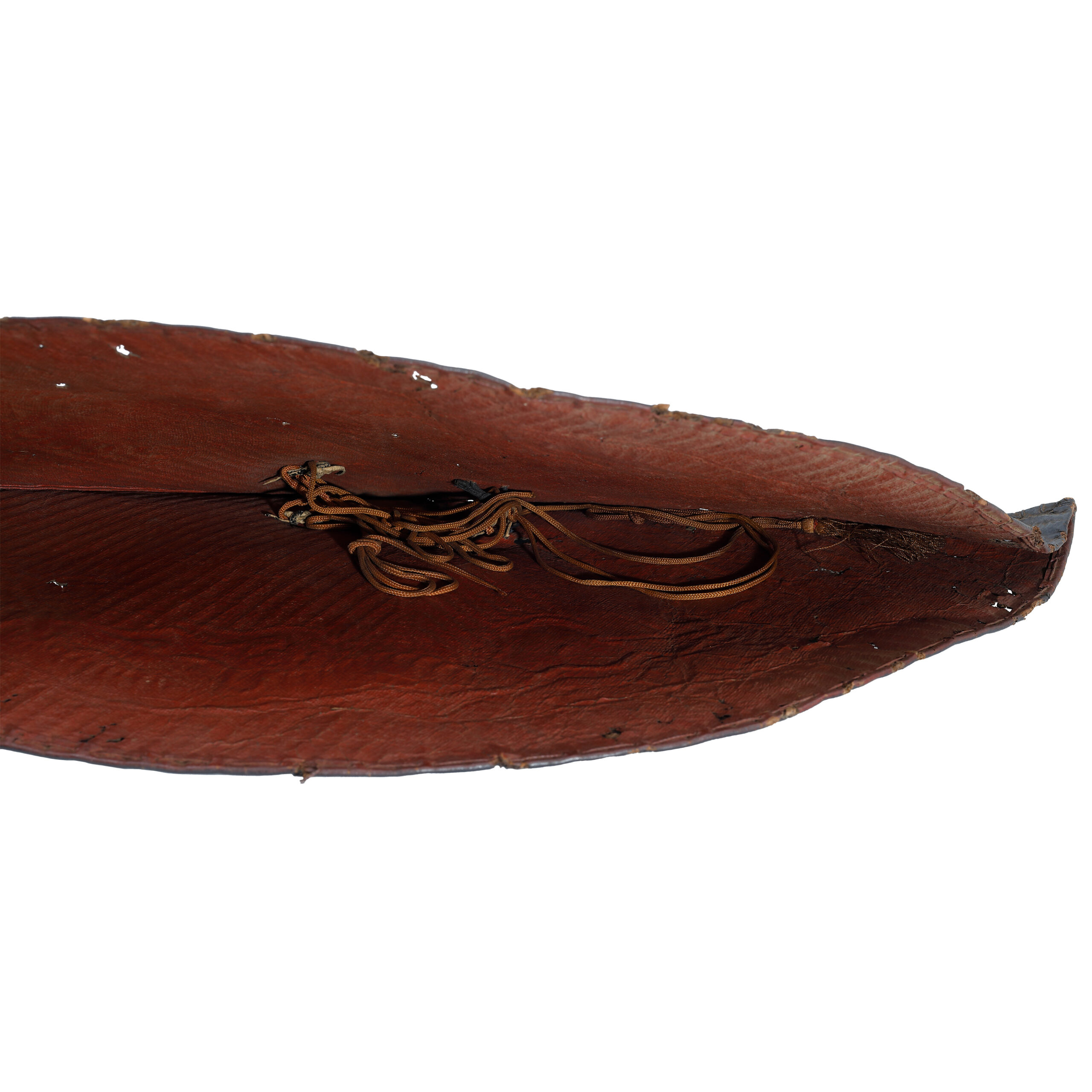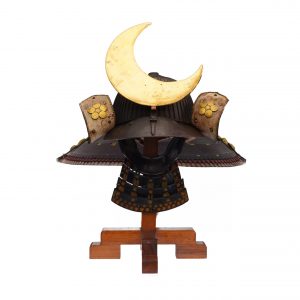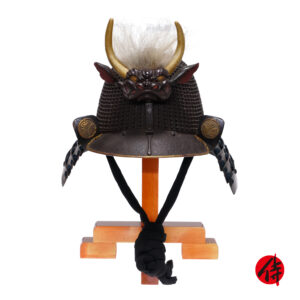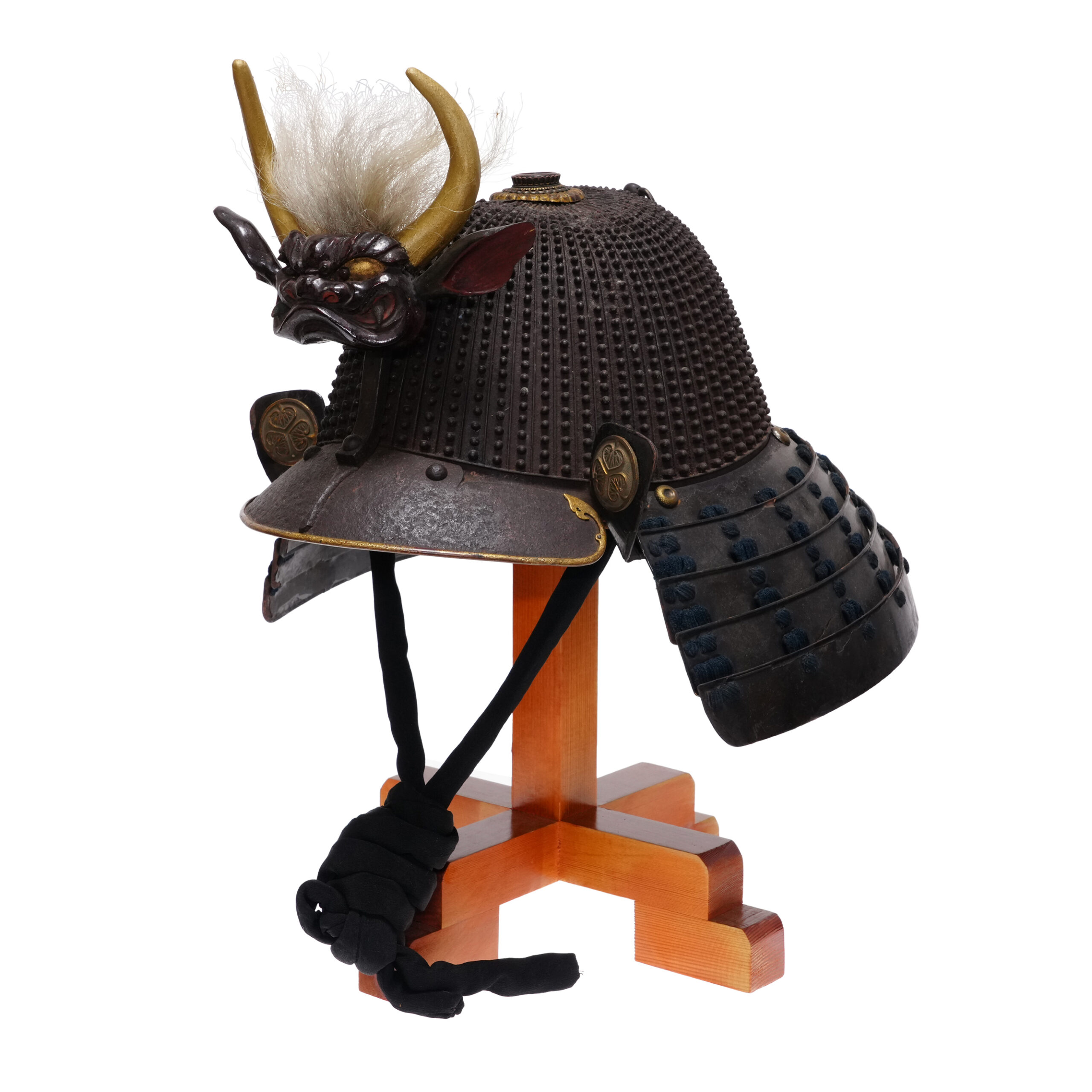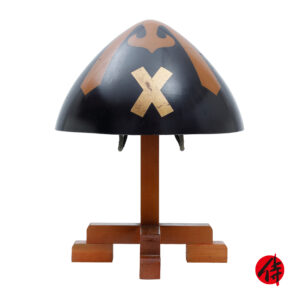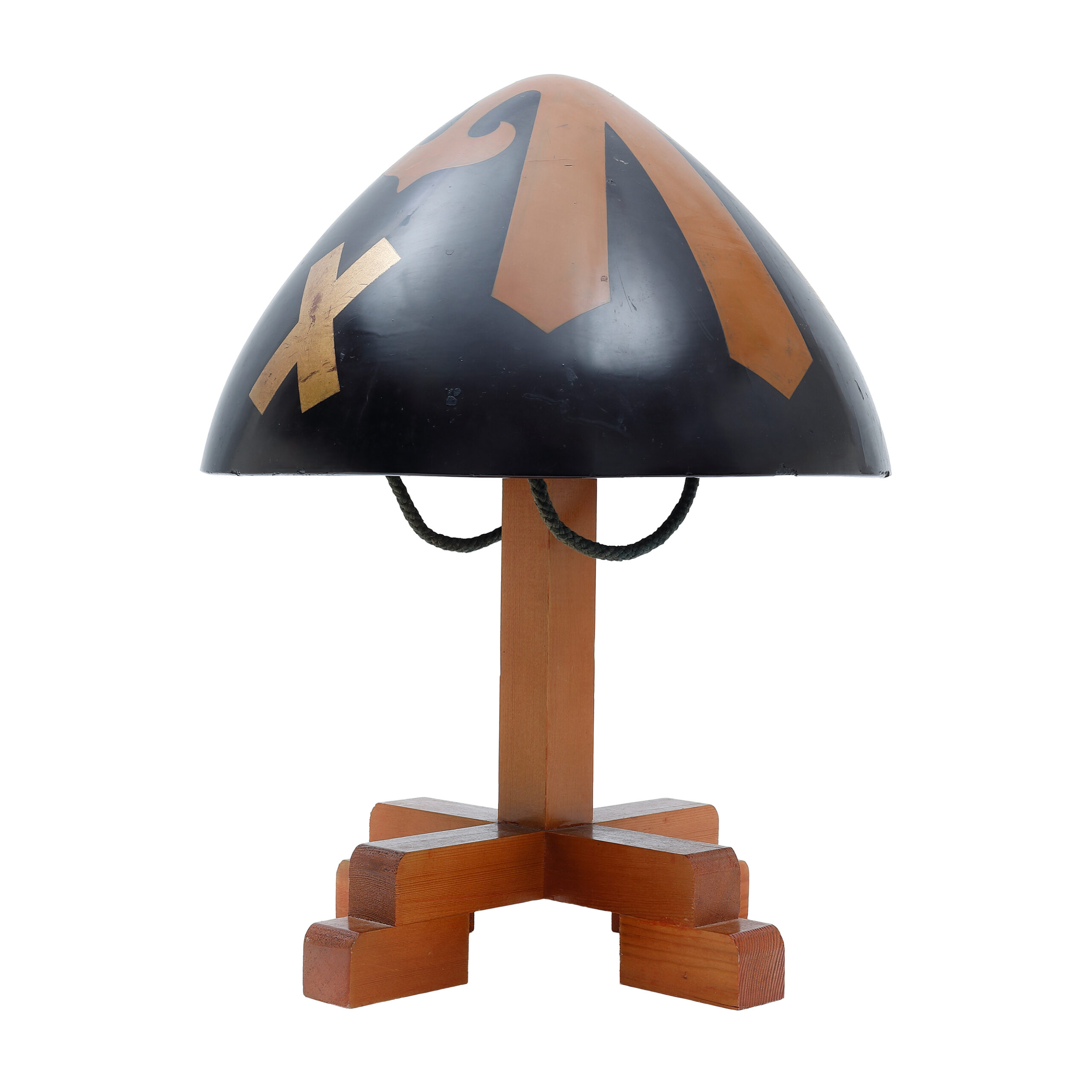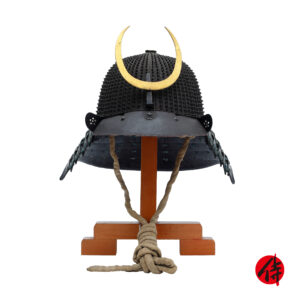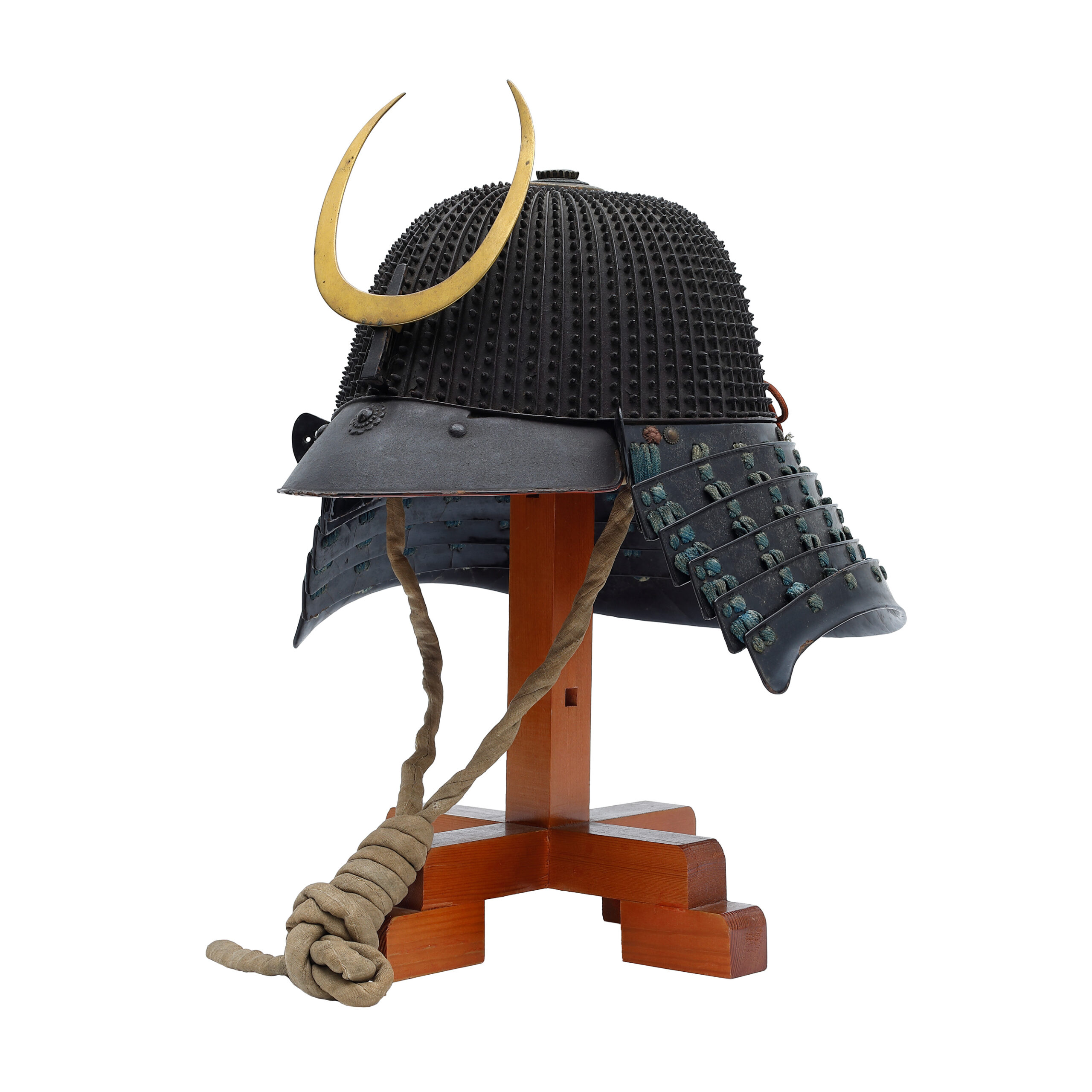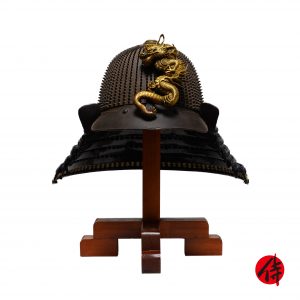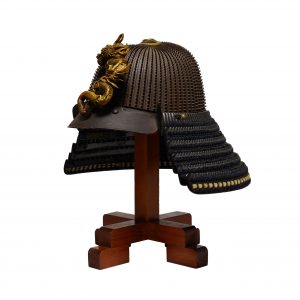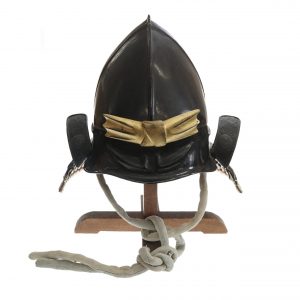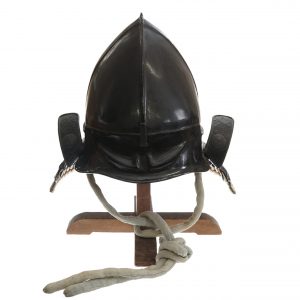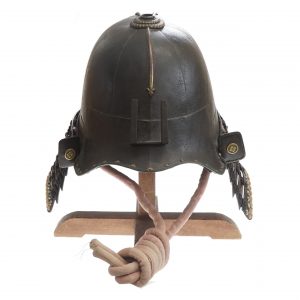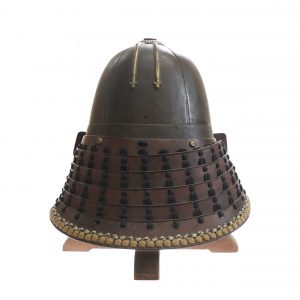Antique Samurai Helmet Jingasa Set
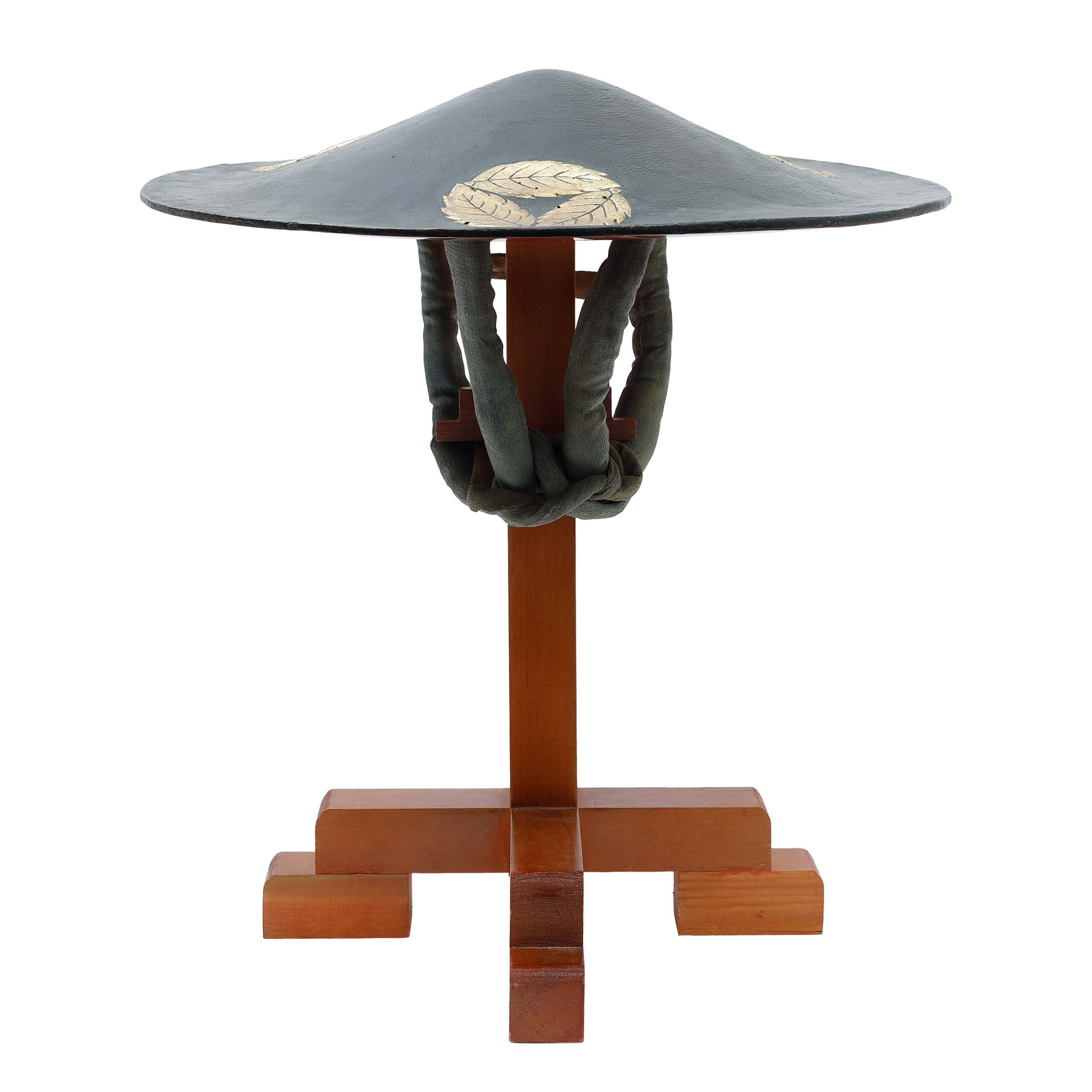
Period: estimated Mid-Late Edo Period
Prime Material: estimated Wood
We classify this item as a type of the Jingasa (陣笠). It is usually made from metal or leather, and Ashigaru (足軽, infantry) and low-ranked soldiers wore it. They substituted it for Kabutos (兜, Samurai helmet). Since the tactics of placing infantry on the front lines became the mainstream, it was a primary matter of how the infantry gained high mobility. Therefore, they wore simple armor with minimal functionality to protect themselves, unlike the luxurious armor of high-ranked Samurai warriors. Crests or marks were drawn on the front of the Jingasa to make it a sign for judging each affiliation.
In the Edo period, people finally welcomed the times of peace. There was a growing trend towards decorative enjoyment, such as designing weapons and armor or how to wear them. Of course, the Jingasa was also included in this tide. Samurai warriors started using Jingasas as a tool to show the wearer’s identity and family, not as a protective gear for the head. Considering its relatively good condition, we think this Jingasa is also one of these Jingasas. Its inside is colored with vermillion lacquer, and the outside is decorated with family crests. Jingasas, which were produced in that period, have artistic and stylish beauty. A theory says that high-ranked Samurai warriors enjoyed wearing these Jingasas when they went out for business, and some of them even changed Jingasas, adapting it to seasons. We hope you enjoyed the history of the Jingasa and would be attracted to the charm of this work.


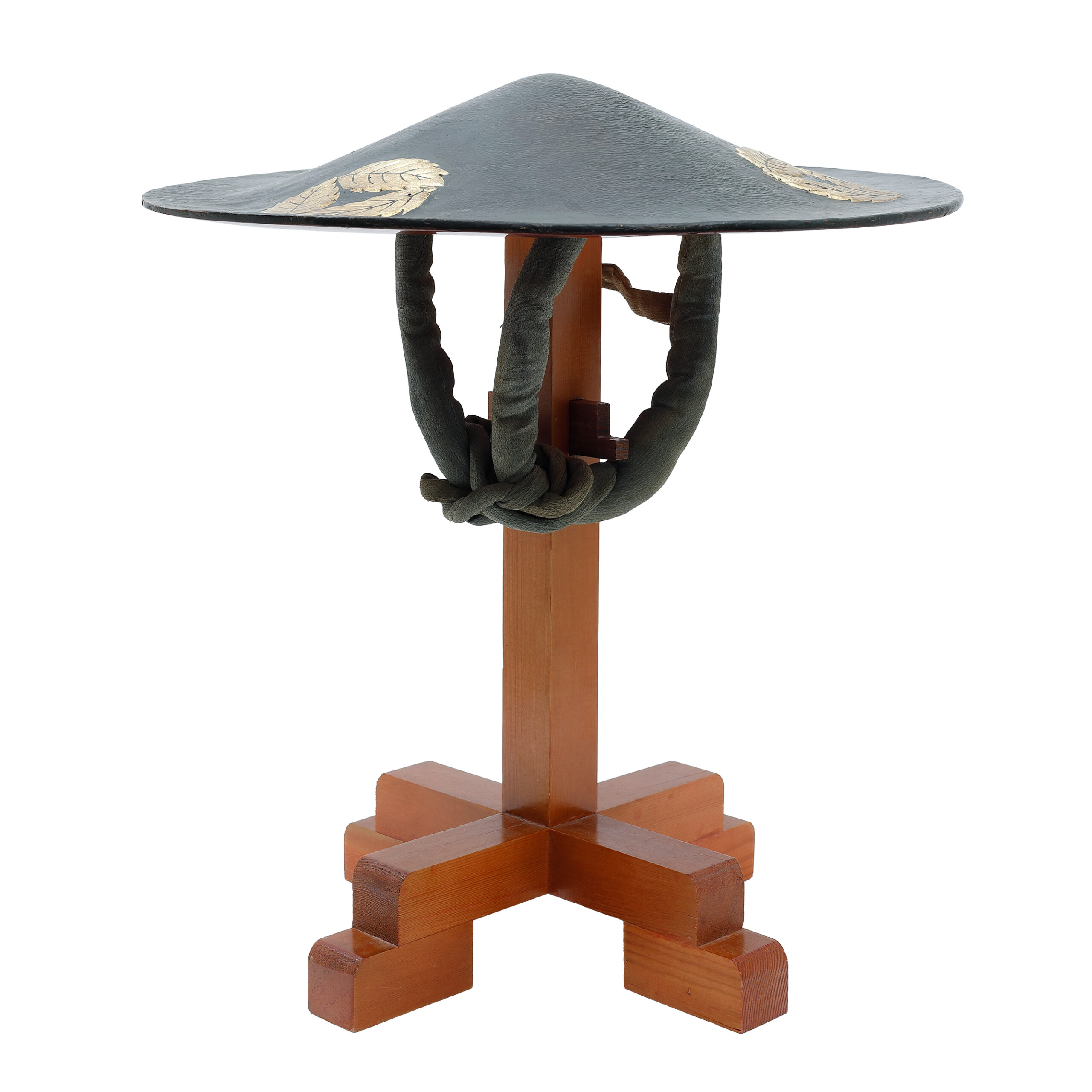
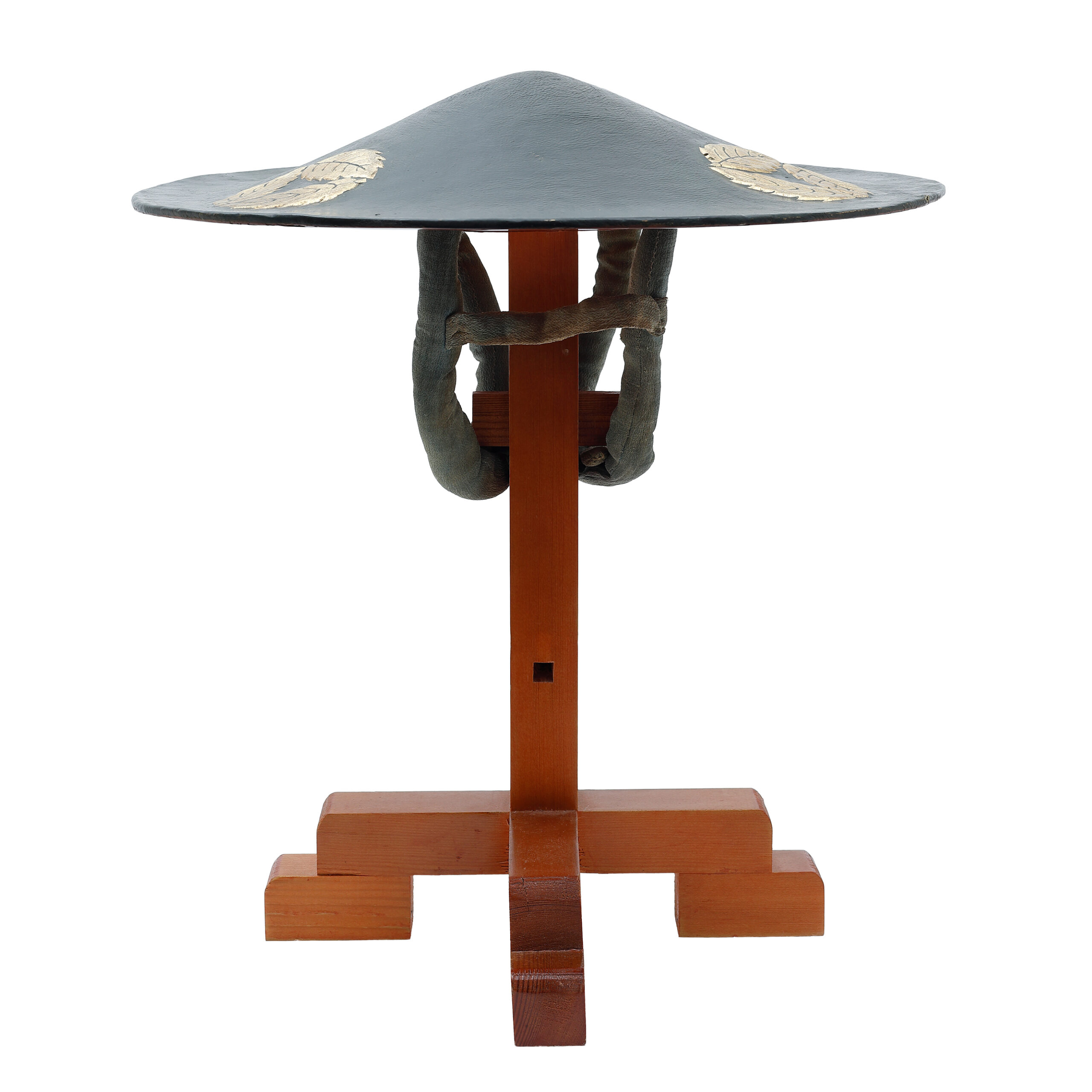
The same family crest is designed in three places of this Jingasa. It is a mark of three leaves, and we assume it was applied here as a family crest. We are unsure which kind of plant is the motif of this design. However, there is a similar design which is called the Mitsu Oi Kashiwa Mon (三つ追い柏紋). It is a type of the Kashiwa (柏, daimyo oak) pattern. The Kashiwa-designed family crests are now so widespread that they are counted as one of the Judai Kamon (十大家紋, ten widely used family crests in Japan).
In the past, Japanese people used oak leaves as vessels for serving food (tableware). This plant is familiar to ancient Japanese people since it is related to food, an essential element in daily life. These lifestyle habits also have a significant impact on the field of faith. Religions at that time arose spontaneously from people’s everyday lives and worshiped “nature” (the sun, mountains, rivers, oceans), which greatly influenced survival. It had a straightforward and primitive structure in which “one prays by making a Kumotsu (供物, offering) to the object.” Leaves of plants such as oak were used as containers for offerings, which is considered to reflect the lifestyle of the time. These customs were passed on to the Shinto (神道), which developed from this primitive religion, and oak leaves are still used today as vessels for offerings at Shinto rituals. Perhaps due to this background, a sense of value that finds “sacredness” and “auspiciousness” in oak leaves seems to have developed. In this way, oak had a certain degree of familiarity with aristocratic society, and from an early stage, it was turned into patterns and used to decorate clothing and furniture.
As mentioned above, Shintoism has a strong connection with oak. Hence, the Kashiwa emblem was initially particularly popular as a crest for a shrine or its enshrined deity or as a family emblem for shrine families. The Kashiwa crest gradually spread to Samurai families; however, this is thought to have been through objects of worship or relationships with Shinto forces. In addition, oak leaves have a habit of not losing old leaves until new ones replace them, so it is said that “generations are uninterrupted” and “transfer of supremacy” (using the word 葉 “leaf” as 覇 “hegemony”). People favored this plant pattern because it was found to be a good luck carrier, such as not causing trouble due to the change of generations. In the Edo period, family crests began to spread to the ordinary people. It could be said that the fact that it was one of the popular family crests that gained much support from the ordinary people who had new family crests has led to the widespread adoption of the Kashiwa crest today.

We estimate this item is a kind of Nirayama Gasa (韮山笠). It was given this name because it was devised by Egawa Tarouzaemon (江川太郎左衛門), a magistrate in Nirayama (韮山), Izu (伊豆), at the end of the Edo period. Due to the condition of the fabric changing over time, it could no longer be worn as a hat. However, you could enjoy it for ornamental purposes. It has a dragon design on both sides, making it highly decorative. Initially, dragons were imaginary creatures found in ancient foreign traditions and myths. Furthermore, it is regarded as a symbol of auspicious signs. Its body is likened to nine animals: antlers are deer, the head is a camel, eyes are demons, the neck is a snake, the belly is the Mizuchi (蛟, a mythical animal in Japan that looks like a snake and has a horn and four legs), scales are fish, claws are falcons, palms are tigers, and ears are cows. It was thought that a dragon would reign at the top of all animals because of its odd-looking appearance.
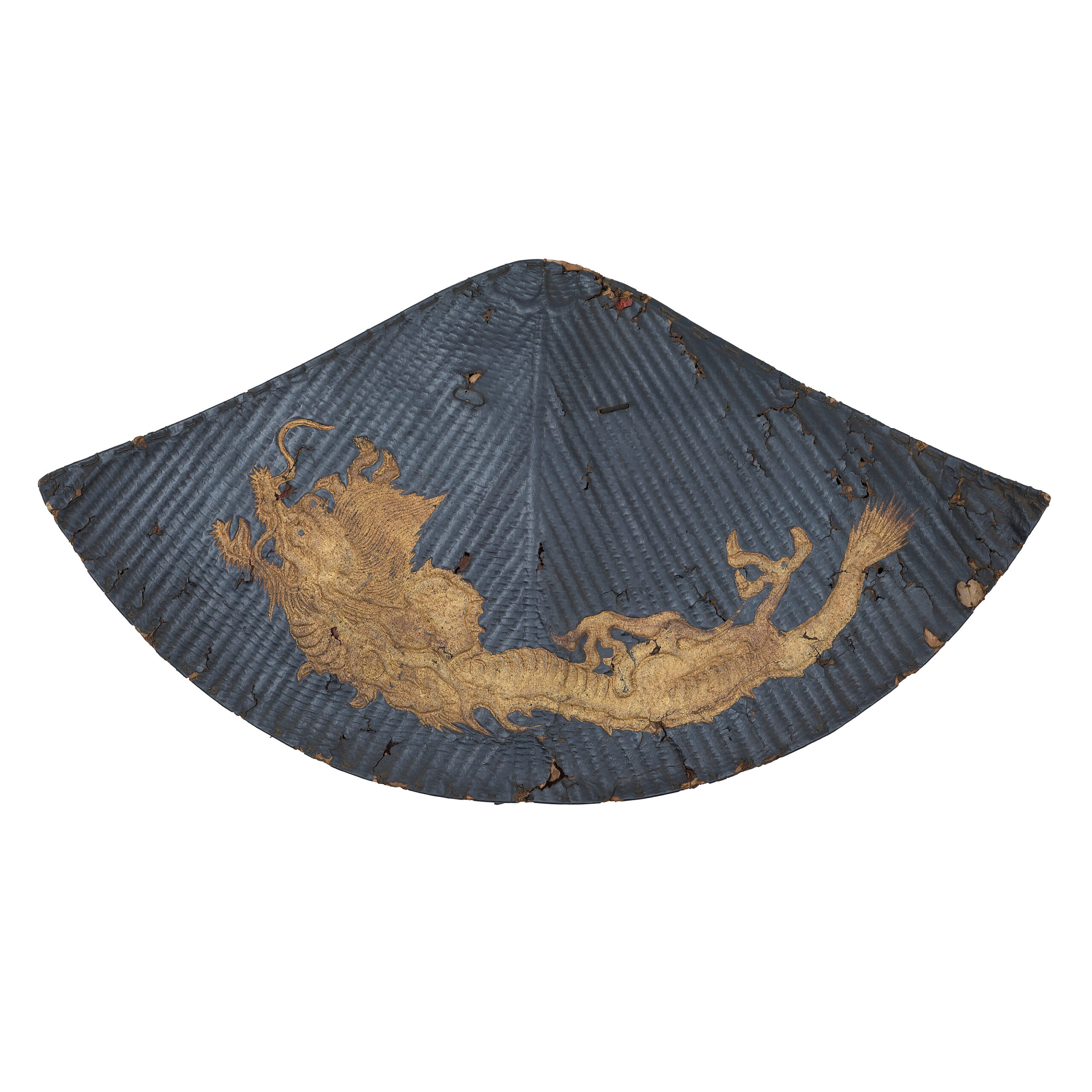
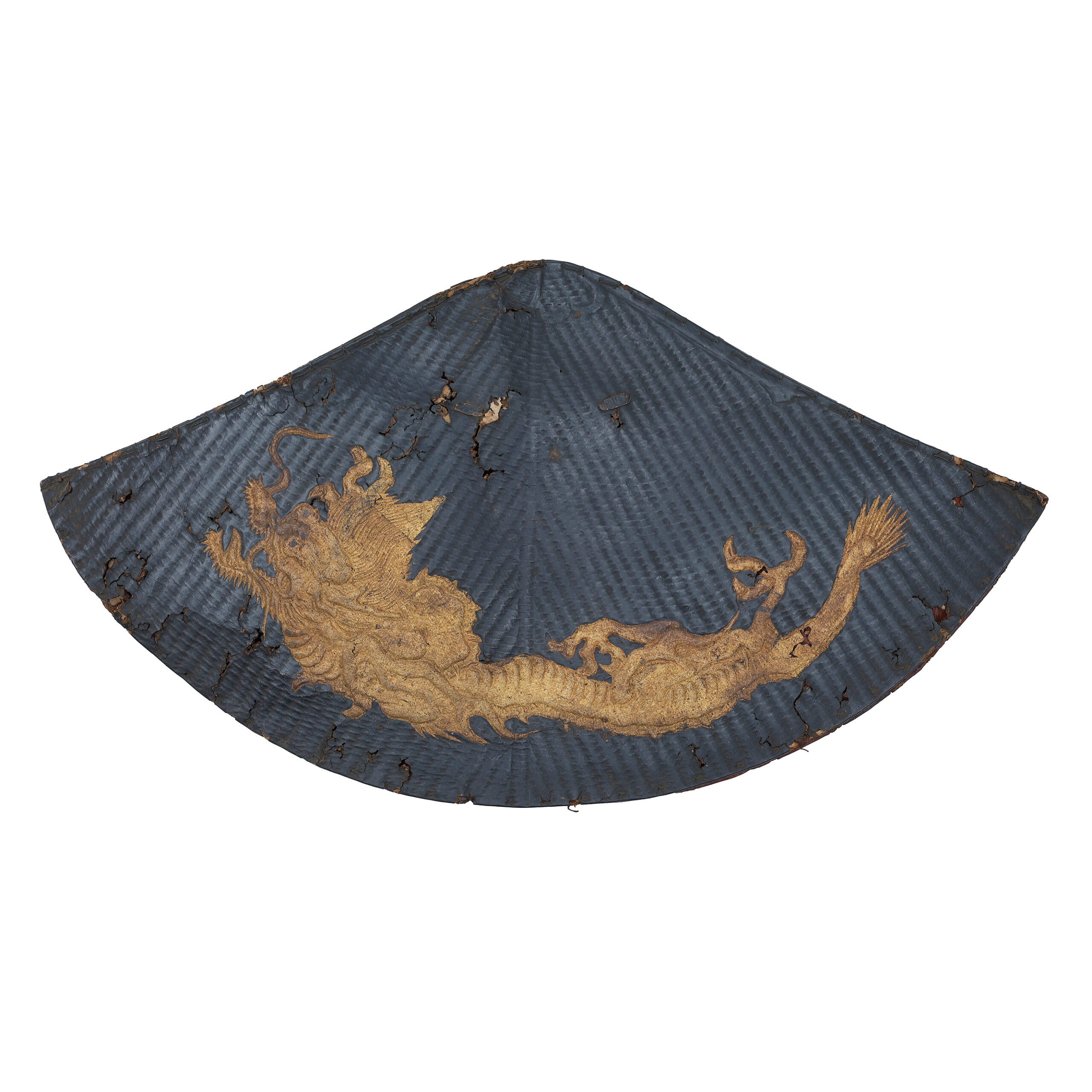
【About us】
Samurai Museum is located in Tokyo, Japan, exhibiting antique artifacts related to the Samurai history. Samurai Museum Shop is the place for those who are interested in Japanese culture and craftsmanship. We deal with antique Samurai swords/armor, traditional crafts made in Japan and so on.
【Antique Japanese helmet (Kabuto) and Export process】
After receiving the full payment from you, we will apply for its export permit from the Board of Education to legally export the helmet to other countries. It normally takes around 2-4 weeks to receive this permit. And we would like you to expect at least 1.0-1.5 months for your order to arrive at your given address after you ordered.
【Payment Method】
We accept payment through Stripe (Credit card), PayPal, Apple Pay or ChromePay, all of which are secure payment methods. Also, you don’t need to make an account on Stripe for the checkout. If you prefer other payment method, please contact us. After confirming your payment, we will apply for an export permit. You may either pay in JPY, USD, AUD, CAD, EUR, CHF or GBP. The price is set in Japanese Yen. Prices in other currencies are automatically calculated based on the latest exchange rate.

【Shipping Duration】
We ship via EMS (Japanese Postal Service). It normally takes at least 5-14 days to receive any packages after you place an order. It might take longer depending on the season or custom clearance. We will inform your order’s tracking number via email.
*Please keep in mind there is possible delay expected in delivery with EMS in some countries due to the pandemic in the world. We offer free shipping only when we can ship by EMS.
【How to make sure the condition】
Please keep in mind that what you are going to purchase is an antique item. We uploaded high resolution photos for you to check its condition thoroughly. If you like to see more photos with different angles, please feel free to contact us. We will be happy to send them to you so that you can make informed decision. It is essential for us to know that you are happy with your choice of a sword. and we are prepared to use the best of our ability to serve you.
【How To Contact Us】
Please contact us through email, Facebook Messenger or Live Chat if you have any questions. You can find each icon on the right side of the website. Please click one of them to reach us. We will reply to you within 1-2 business days.
【How To Preserve Antique Samurai Armor/Helmets】
Dryness, humidity, and bad ventilation might deteriorate the condition of antique Samurai armor/helmet. The best temperature to preserve Samurai armor/helmet is around 20℃ in Celsius, and humidity should be about 60%. Direct sunlight should be avoided. We recommend storing armors/helmets in a room with good ventilation. If you like to display them outside the boxes for a prolonged time, we suggest using a glass case in order for dust not to be accumulated easily. In case you don’t use a glass case, please make sure to regularly dust off from the armor/helmets by using a soft brush made of delicate cloth or brush for painting.
If you like to know more about the preservation of this armor, please feel free to contact us.
